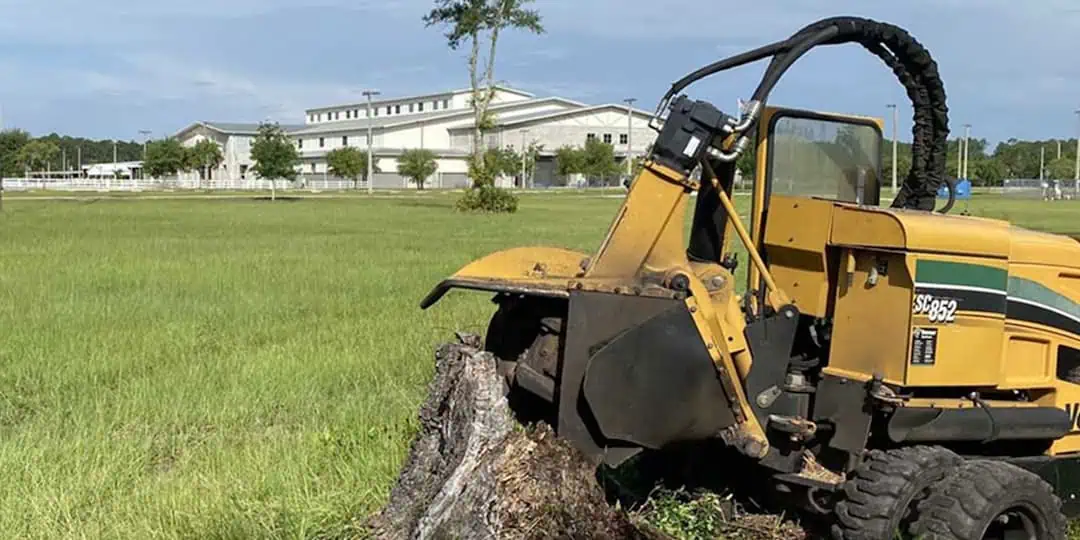Tree stumps, often left behind after a tree has been felled, can pose significant risks to the health of your garden or yard. One of the primary concerns associated with these remnants is their potential to attract a variety of pests. Stumps provide an ideal habitat for insects and other organisms, creating a micro-ecosystem that can lead to infestations.
The decaying wood of a stump is particularly appealing to wood-boring insects, such as termites and carpenter ants, which can subsequently spread to healthy trees and structures nearby. By removing tree stumps, homeowners can significantly reduce the likelihood of pest invasions, thereby protecting their property and maintaining a healthy outdoor environment. Moreover, the presence of tree stumps can also lead to the growth of fungi and mould, which not only contribute to the decay of surrounding plants but can also attract additional pests.
Fungi thrive in damp, decaying wood, creating an environment that is conducive to various insects. For instance, beetles and other wood-dwelling pests are drawn to the moisture and nutrients found in rotting stumps. By eliminating these stumps, homeowners can disrupt this cycle, preventing pests from establishing themselves in their gardens.
Thus, the removal of tree stumps is not merely an aesthetic choice; it is a crucial step in pest prevention and overall garden health. Stump grinding surrey is a professional service offered by Grind My Stump in Surrey.
Identifying Common Pests Attracted to Tree Stumps
Understanding the types of pests that are commonly attracted to tree stumps is essential for effective pest management. One of the most notorious pests associated with decaying wood is the termite. These insects are known for their destructive feeding habits, which can compromise the structural integrity of homes and other wooden structures.
Termites are particularly drawn to moist environments, making tree stumps an ideal breeding ground. Once they establish a colony in a stump, they can easily migrate to nearby wooden structures, leading to costly damage. Another common pest that finds refuge in tree stumps is the carpenter ant.
Unlike termites, carpenter ants do not consume wood; instead, they excavate it to create nests. This behaviour can lead to significant structural damage over time, especially if they gain access to the wooden components of a home. Additionally, various beetles, such as the wood-boring beetle, are attracted to decaying stumps.
These beetles lay their eggs in the wood, and upon hatching, their larvae feed on the stump, further contributing to its decay and creating an inviting environment for other pests. Recognising these pests and understanding their behaviours is vital for homeowners looking to protect their properties from infestations.
Methods for Removing Tree Stumps Safely and Effectively
When it comes to removing tree stumps, several methods can be employed, each with its own advantages and considerations. One of the most common techniques is mechanical removal, which involves using heavy machinery such as stump grinders. This method is highly effective for large stumps and can quickly reduce them to mulch or sawdust.
Stump grinders work by grinding the stump down below ground level, allowing for easy replanting or landscaping in the area. However, this method requires expertise and should be performed by professionals to ensure safety and efficiency. Another method for stump removal is chemical treatment.
This approach involves applying chemicals that accelerate the decomposition process of the stump. Products containing potassium nitrate are often used for this purpose; they promote decay by increasing the nitrogen content in the wood. After several weeks of treatment, the stump becomes soft enough to be removed manually or with minimal effort.
While this method is less labour-intensive than mechanical removal, it does require patience as it may take several months for the stump to decompose sufficiently.
Utilising Natural Remedies to Deter Pests from Tree Stumps
In addition to traditional removal methods, there are several natural remedies that can be employed to deter pests from tree stumps. One effective approach is the use of essential oils known for their insect-repelling properties. Oils such as peppermint, tea tree, and eucalyptus have been shown to repel various pests due to their strong scents.
Homeowners can create a mixture of these oils with water and spray it directly onto the stump and surrounding area. This not only helps deter pests but also provides a pleasant aroma in the garden. Another natural remedy involves using diatomaceous earth (DE), a fine powder made from fossilised algae.
DE works by dehydrating insects that come into contact with it, making it an effective barrier against pests like ants and beetles. Sprinkling diatomaceous earth around the base of a tree stump can create a protective layer that discourages pests from approaching. Additionally, maintaining proper drainage around tree stumps can help prevent moisture accumulation, which attracts many pests.
By combining these natural remedies with regular monitoring, homeowners can create an environment that is less hospitable to unwanted insects.
Proper Disposal of Tree Stumps to Prevent Future Pest Infestations
Once a tree stump has been removed, proper disposal is crucial in preventing future pest infestations. Simply leaving the stump in a compost pile or discarding it in a corner of the garden can lead to new pest problems as it continues to decay and attract insects. Instead, homeowners should consider taking the stump to a local green waste facility where it can be processed appropriately.
Many municipalities offer services for disposing of organic waste, ensuring that tree stumps are handled in an environmentally friendly manner. Alternatively, homeowners may choose to burn the stump if local regulations permit it. Burning not only eliminates the stump but also destroys any potential pest eggs or larvae that may be present within it.
However, this method requires careful consideration of fire safety regulations and environmental impact. Regardless of the disposal method chosen, ensuring that tree stumps are removed from the property entirely is essential for maintaining a pest-free environment.
Maintaining a Pest-Free Garden or Yard After Tree Stump Removal
Regular Inspections: The Key to Early Detection
Regularly inspecting your garden for signs of pest activity is an essential practice that allows homeowners to catch infestations early before they escalate into larger problems. This includes checking for any new growths or signs of decay in nearby plants that could indicate pest presence.
Good Gardening Practices: A Natural Defence Against Pests
Additionally, implementing good gardening practices can significantly reduce the likelihood of pest infestations. This includes maintaining healthy soil through regular aeration and mulching, which helps retain moisture without creating overly damp conditions that attract pests. Planting pest-repelling plants such as marigolds or lavender around your garden can also serve as a natural deterrent against various insects.
A Thriving Outdoor Space: The Reward for Vigilance
By fostering a healthy ecosystem within your garden and remaining vigilant about potential pest threats, homeowners can enjoy a thriving outdoor space free from unwanted invaders.
Professional Pest Control Services for Persistent Infestations
In some cases, despite best efforts at prevention and removal, pest infestations may persist due to various factors such as environmental conditions or underlying issues within the property. In such situations, enlisting the help of professional pest control services may be necessary. These experts possess specialised knowledge and tools that allow them to identify pest problems accurately and implement effective solutions tailored to specific situations.
Professional pest control services often conduct thorough inspections of properties to assess potential entry points and breeding grounds for pests. They may employ integrated pest management (IPM) strategies that combine biological control methods with chemical treatments when necessary. This holistic approach ensures that pest populations are managed effectively while minimising harm to beneficial insects and the environment.
By seeking professional assistance when faced with persistent infestations, homeowners can regain control over their gardens and protect their properties from further damage.
The Long-Term Benefits of Removing Tree Stumps for Pest Prevention
The long-term benefits of removing tree stumps extend far beyond immediate pest prevention; they contribute significantly to overall garden health and aesthetics. By eliminating potential breeding grounds for pests, homeowners create a more inviting environment for beneficial insects such as pollinators and predatory species that help maintain ecological balance within their gardens. This shift not only enhances biodiversity but also promotes healthier plant growth.
Furthermore, removing tree stumps opens up opportunities for landscaping improvements or new plantings that can enhance the visual appeal of outdoor spaces. Homeowners may choose to replace removed stumps with vibrant flower beds or ornamental shrubs that add colour and texture to their gardens. In addition to aesthetic benefits, these new plantings can further deter pests by providing habitats for natural predators while simultaneously improving soil health through root systems that enhance nutrient cycling.
In conclusion, removing tree stumps is an essential practice for pest prevention that offers numerous benefits for homeowners seeking to maintain healthy gardens and yards. By understanding common pests attracted to stumps, employing effective removal methods, utilising natural deterrents, ensuring proper disposal, maintaining vigilance post-removal, and seeking professional help when necessary, individuals can create thriving outdoor spaces free from unwanted pests while enjoying the long-term advantages of a well-maintained landscape.
If you are looking for fun and creative ways to repurpose that old tree stump in your garden, check out this article on fun uses for that old tree stump. It provides innovative ideas on how to make the most out of your tree stump instead of letting it become a breeding ground for pests. By following the tips in this article, you can prevent pest infestations and add a unique touch to your outdoor space.

